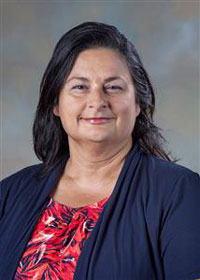
January is a wonderful month. It begins the year ahead with hope for the future. Whether the hope is personal, perhaps in the form of a resolution or goal, it can also have a larger reach, a bigger audience. For those of us in the United States, a major January milestone is the celebration of Martin Luther King Jr.’s birthday on the third Monday of the month. His actual date of birth was January 15, 1929. Ninety years later his influence on the course of history continues.
While quantifying things numerically makes many of us feel secure, confident in our understanding and willing to extrapolate on the basis of how, over the decades, his life has influenced history, a recent event underscores for me both the personal and global audience of King’s influence.
As part of the seasonal activities in December, I joined a multi-generational group of friends to watch White Christmas at a large Albuquerque movie theater. Our diverse group included two children, ages eight and ten, four millennials and two baby boomers. The eight of us represented about one-third of the total audience in the theater. There I go quantifying things again.
My friend and I — the baby boomers — and one millennial were the only ones in our group who had seen the movie before, and so it was easy to ask the others over ice cream after the movie, “How did you like it?”
It immediately became clear that the children did not like the movie or any aspect of it. From their point of view, the costumes were not interesting, the music was not memorable and the storyline of falling in love was missed entirely. However, the millennial moviegoers who saw it for the first time had a completely different impression than the children. They each made direct eye contact with me and said it was a really white Christmas with no one else — no Asian, no Hispanic, no black people or any diversity. We think the dancing guy (Danny Kaye) might be gay, but we’re not sure.
As the conversation drifted to what America represented in 1954, the year White Christmas was released, there was general astonishment that the movie may have been marketed to a very “white” America and that representation for all citizens only came to the forefront with activism by the Southern Christian Leadership Conference.
“I have a dream that my four children will one day live in a nation where they will not be judged by the color of their skin but by the content of their character.” — Martin Luther King Jr., I Have A Dream speech, August 28, 1963
As I sat stirring my ice cream into slush and only half listening to the conversation around me, I was struck by the truth of my friends’ critique of the movie. World War II provides the foundation of the movie’s plot, and yet I could not remember seeing any diversity among the soldiers depicted in the movie. The kids, as I now lumped the millennials and children into a group, have not seen movies, television or other media in their lifetimes that have been cast so narrowly. Their sphere of entertainment includes people from all walks of life, not just one. The same holds true for their dining experience, right here, right now, at the ice cream parlor and not at a segregated lunch counter in Alabama.
Hope burns in my heart that there are at least two generations of citizens that I interact with on a regular basis that see a whole community of people when they look at the horizon. Hope fuels my thoughts as I re-think my favorite holiday movie of all time to be Polar Express and no longer White Christmas. Hope enters my prayers that we will continue to have the courage of our convictions to make the world a better place for all of us, just as Dr. Martin Luther King Jr. envisioned.